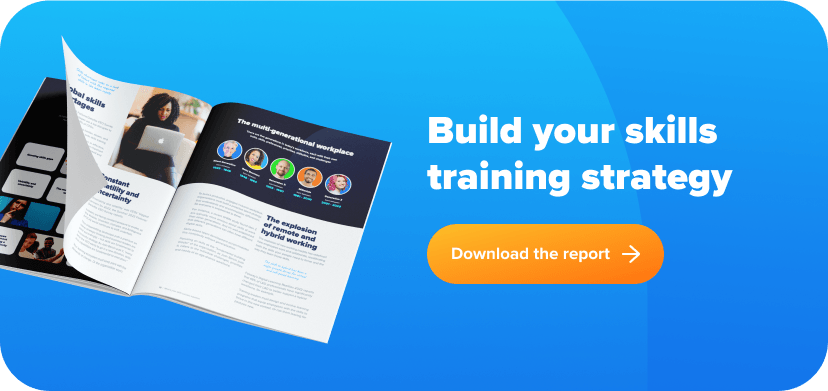Nowadays, the traditional approach to employee management is no longer sufficient. Organizations are increasingly shifting towards more flexible talent retention frameworks, placing a greater emphasis on skills over roles. This transformative approach is essential for staying competitive and future-proofing your business. In this article, we’ll explore the key strategies for establishing and nurturing a skills-based organization and providing actionable tactics to unlock your employees’ full potential.
The benefits of becoming a skills-based organization
Amidst the ever-evolving landscape of technological advancements and market dynamics, organizations are placing greater emphasis on identifying and cultivating vital skills. According to industry leaders, companies prioritizing skills-based hiring and development witness tangible improvements in innovation, productivity, employee engagement, and the mitigation of hiring biases. This strategic approach ensures a more robust and adaptable workforce and fosters a more inclusive and effective organizational culture. That’s why shifting to a skills-based organization is crucial and can provide numerous benefits, including:
- Enhanced innovation and productivity: Companies with a strong focus on skills development report a 25% increase in innovation and a 20% boost in productivity.
- Higher employee engagement: Skills-based organizations see a 30% higher engagement rate, as employees feel more valued and aligned with their career growth.
- Reduced bias: By focusing on skills rather than credentials, organizations can reduce hiring biases and build more diverse teams.

Key strategies for a skills-based approach
1. Mapping Essential Skills
Skills mapping is the foundation of a skills-based organization. It involves identifying the skills needed to achieve your business goals and mapping them against your current workforce capabilities. This process helps in recognizing skill gaps and planning for future needs.
Actionable Steps:
- Conduct a skills audit to understand the current skills landscape.
- Identify critical skills required for future success.
- Develop a skills matrix to map employee skills against organizational needs.
2. Redefining Hiring Practices
Traditional hiring practices often focus on roles and credentials. A skills-based approach shifts the focus to the specific skills and competencies required for success in a role.
Actionable Steps:
- Update job descriptions to emphasize skills over experience.
- Use skills assessments during the hiring process.
- Promote internal mobility by matching employees to roles that align with their skill sets.

3. Investing in Continuous Development
Continuous learning and development (L&D) are crucial for maintaining a competitive edge. Organizations must cultivate a culture of learning that sparks engagement and offers upskilling opportunities.
Actionable Steps:
- Implement personalized learning pathways tailored to individual career goals.
- Offer regular training and development programs.
- Encourage a growth mindset and continuous feedback culture.
4. Implementing a Skills-Based Performance Management System
A performance management system that focuses on skills development can drive success by aligning employee goals with organizational objectives.
Actionable Steps:
- Set performance goals based on skill acquisition and improvement.
- Provide regular feedback and coaching.
- Reward skill development and application.

L&D transformation: breaking down silos
A successful skills-based organization requires a holistic approach to HR, breaking down traditional silos and fostering collaboration across departments. This includes tying skill-building to career paths, internal mobility, and retention, while also promoting well-being, diversity, and inclusion.
Key Points:
- Flexibility: 81% of executives are changing workplace policies to offer greater flexibility to their workforce.
- Humanity and Well-Being: Emphasizing care, diversity, and inclusion enhances employee satisfaction and retention.
A continuous journey
Building a skills-based organization is an ongoing journey of learning and adaptation. It requires constant revision and improvement to maximize the skills within your team. By fostering a culture of continuous learning, businesses can stay ahead of the curve and lead in building the new normal.
The transition to a skills-based organization is not just a strategic move but a necessary one for future success. By focusing on skills mapping, redefining hiring practices, investing in continuous development, and implementing a skills-based performance management system, organizations can unlock their employees’ full potential and drive long-term growth.
Don’t miss this opportunity to transform your talent strategy and stay ahead in the competitive market. This approach is ideal for business leaders, HR and L&D professionals, and talent development managers looking to navigate the evolving workforce management landscape. By embracing continuous learning and adaptation, your organization can build a resilient and dynamic workforce ready to tackle the challenges of tomorrow.







